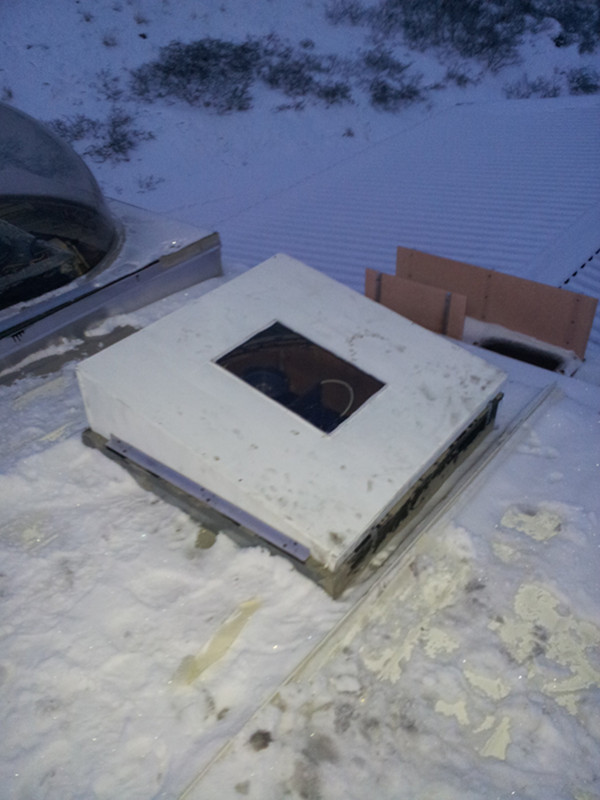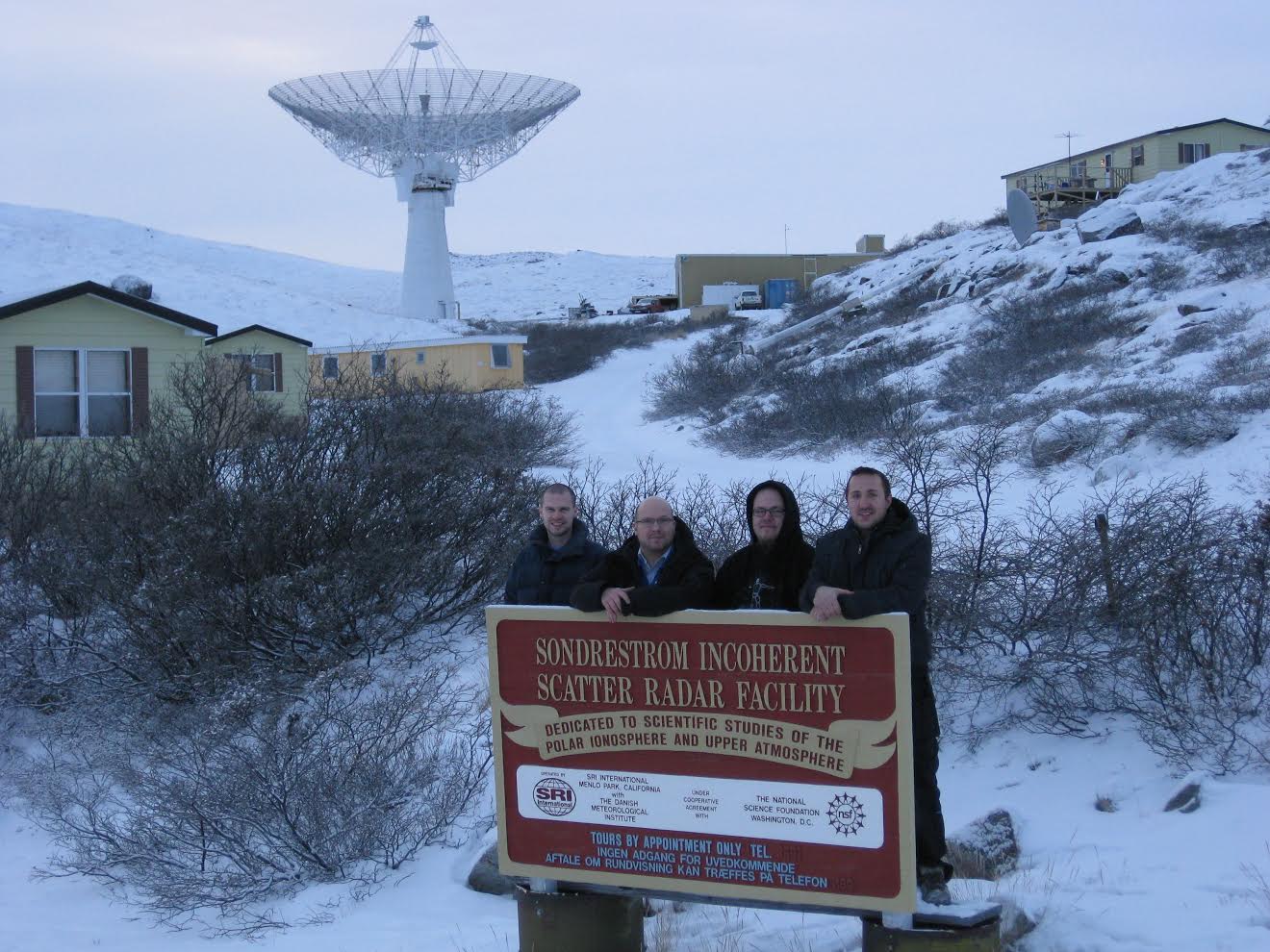Multiscale Auroral Imaging

DMC camera opening in roof.
In this effort, “multiscale” means simultaneously observing and analyzing auroral phenomena in different overlapping spatial and temporal scales. By using highly sensitive Andor sCMOS cameras with coaxial look direction, one camera having a 6 degree field of view (FOV) and the other camera having a 50 degree FOV, and running both at their maximum sustained frame rate ~30 frames/sec (fps), we can study the finest ground-observable auroral scale while maintaining a context with the wider neighborhood. A meta-instrument is formed from joint analysis with the all-sky camera, spectrometer, and multi-megawatt 440 MHz incoherent scatter radar (ISR).

Sondrestrom ISR staff.
The cameras were installed at the Sondrestrom Radar Facility by an intrepid team. Eggert Guðmundsson was a key player in making on-site changes for inevitable modifications needed for the novel imaging system.
With such a narrow FOV, the typical poly domes used caused distortion in the images, such that the camera could not come close to focusing. Eggert and crew removed the dome and built a superstructure with flat glass. The top photo is of the first test to verify the dome was causing the problem. He simply removed the dome and we took images with the cameras open to the sky! Thankfully it must not have been a windy night.